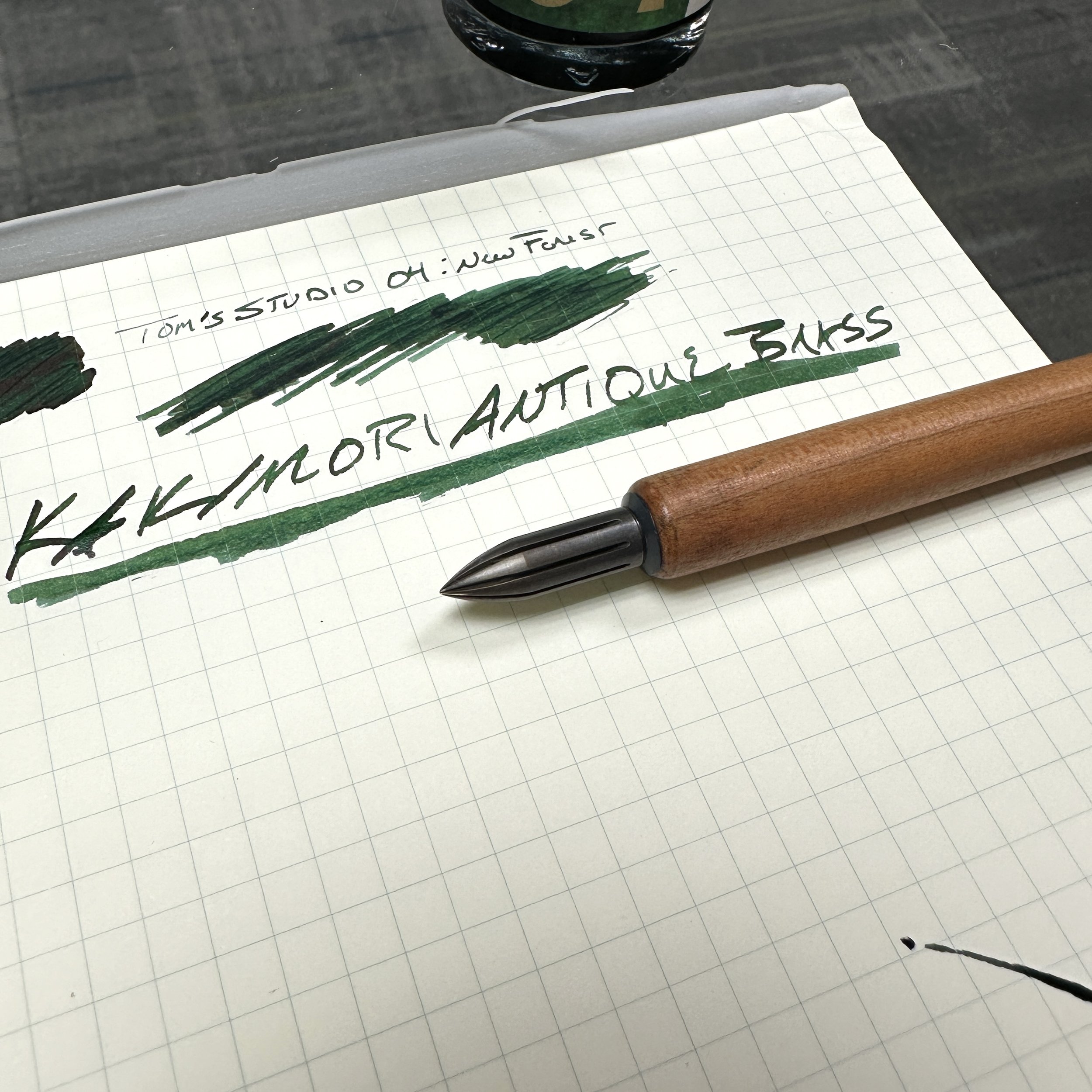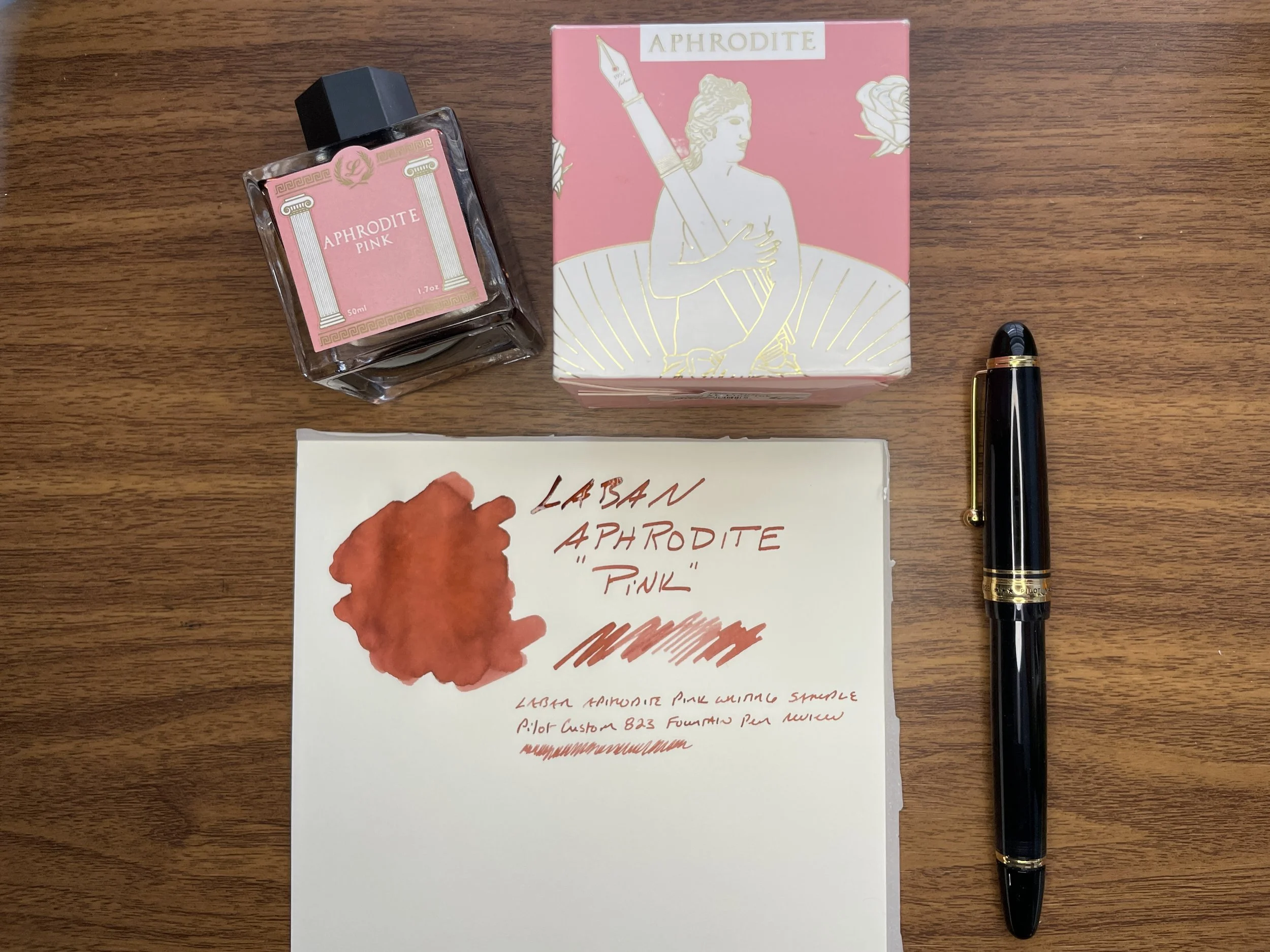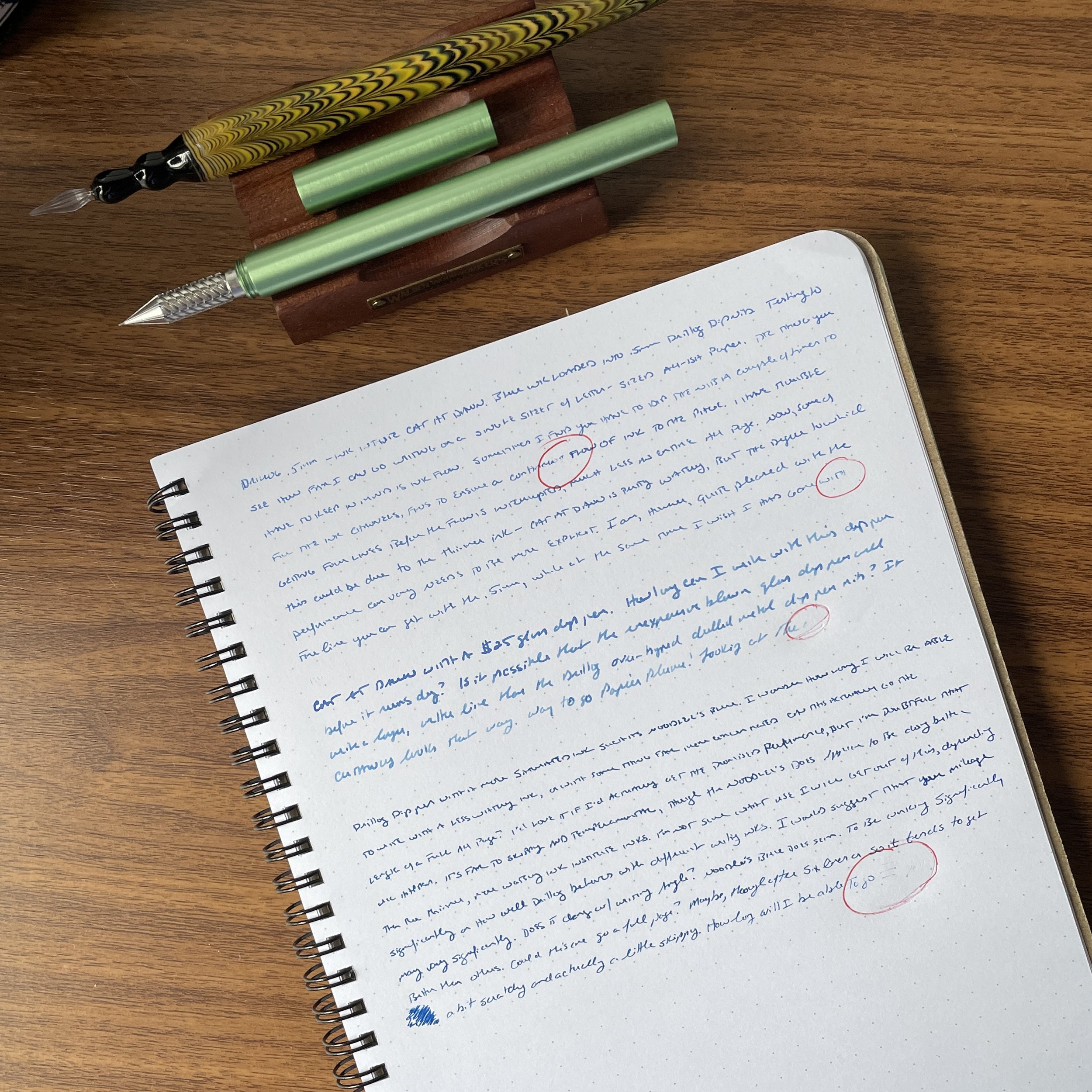Takeaway and Final Thoughts
I hate to say it, but I consider the performance of my Drillog dip pen to be unacceptable for the price. At ¥25,692, which equates to roughly $225 at today’s exchange rate, that’s a huge premium for a dip pen that promises performance based on precision engineering - the source of the astronomic price tag - but fails to deliver a writing experience consistently better than much less expensive options. If I paid $50 for this pen, I might say it was “ok” and recommend that people pick it up if they’re interested in using it for testing inks or are looking for a machined dip nib with a very small tip that might be advantageous for certain types of lettering and other artwork requiring a great degree of precision. That said, I’m not sure what this offers the typical writing and ink enthusiast over a glass pen or inexpensive traditional XXF calligraphy nibs, other than the Drillog will last much longer and comes with a capped holder (which is quite cool).
This purchase was intended as an experiment, and I went into it suspecting the Drillog would likely not live up to the lofty promises, having read a handful of online reviews and comments similar to my own. Still, I expected more than this. I’ve also had the opportunity to test a handful of early-release “tester” Drillogs sent to other bloggers and reviewers, all of which worked much better than the one I received. That leads me to suspect that these review units were subjected to a higher level of QC testing than the ones that ultimately went out the door to paying customers, which is disappointing. A quick scan of the comments on the Kickstarter page confirms that I’m not the only one who’s had problems. I’ll be keeping on eye on Shion and Drillog to see if there are manufacturing tweaks made to a “version 2.0”, and whether they offer to take back any malfunctioning pens. So far, I’ve not seen any outreach in the Kickstarter comments.
UPDATE: Following this review, Drillog reached out, confirmed that it looks like something is wrong with my pen from the writing sample, and offered to send a replacement. I plan to take them up on it and will report back on how the new nib functions.
Disclaimer: As noted, I purchased the product featured in this review with my own funds, for my own personal use. All opinions expressed here are my own. This post does not contain affiliate links, and I was not compensated in any way for this review.




